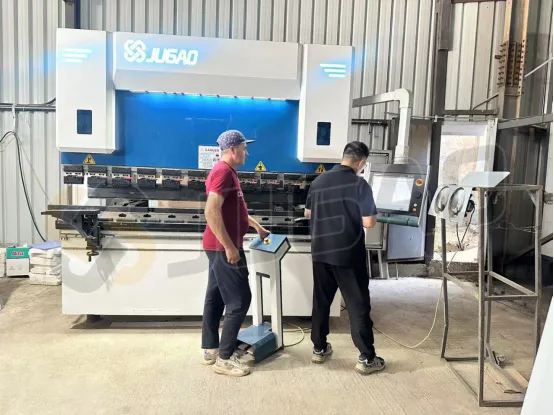-
tel:
+86-13222111178 -
email:
info@ntjugao.com
In-Depth Analysis of Y1/Y2 Axis Control System for CNC Press Brakes
In-Depth Analysis of Y1/Y2 Axis Control System for CNC Press Brakes
Jul 16, 2025
Core Function Directory
Dual-Axis Synchronization Principle
Precision Calibration Guide
Troubleshooting Solutions
In precision sheet metal fabrication, the Y1/Y2 axis control system of CNC press brakes serves as the core element ensuring bending accuracy. This dual-axis synchronous system intelligently coordinates the movement of both hydraulic cylinders, effectively resolving deflection issues common in traditional single-axis systems.

I. Technological Innovation Principles
Modern high-end press brakes utilize a dual-axis control system featuring:
High-precision grating scale feedback (resolution: 0.001mm)
Dual servo motor closed-loop control
Real-time pressure compensation algorithms
Automatic deflection correction function
II. Standard Operating Procedures
Startup Calibration
After prolonged shutdown, execute:
Dual-axis auto-zeroing program
Hydraulic system pre-pressure test
Laser alignment detection (error ≤0.02mm)
Runtime Monitoring
Dual-axis position comparison at 10ms intervals
Dynamic pressure balance adjustment
Abnormal vibration monitoring and alarm
Maintenance Essentials
Weekly hydraulic oil cleanliness inspection
Monthly grating scale calibration
Quarterly servo motor filter replacement
III. Common Issue Resolution
|
Symptom |
Possible Cause |
Solution |
|
Uneven bending angles |
Grating scale contamination |
Clean with anhydrous ethanol |
|
Cylinder sync alarm |
Servo valve blockage |
Execute forced flushing procedure |
|
Positioning drift |
Encoder interference |
Verify grounding resistance <4Ω |
Industry Application Data
An aerospace components manufacturer achieved after implementation:
Product symmetry qualification rate increased to 99.9%
Die wear reduced by 40%
Setup changeover time shortened by 70%
Pro Tip: Regular system parameter backups can reduce 90% of unplanned downtime
Recent Posts

October 26, 2016
The Most Successful Engineering Contractor
Nov 05, 2025
How to choose the best plate rolling machine?
Oct 29, 2025
Key Configuration Steps for the DELEM DA-66T Tool











